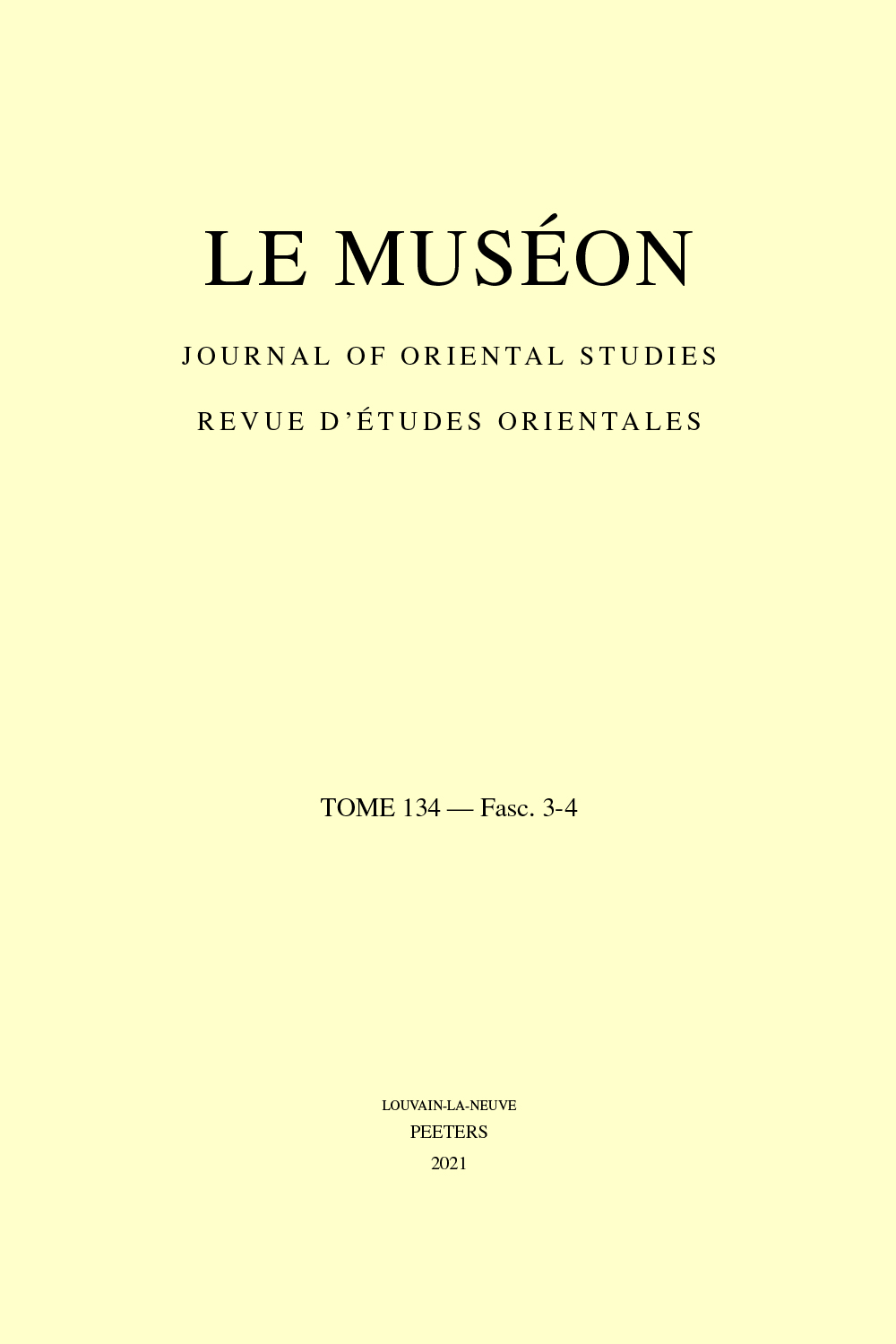 previous article in this issue previous article in this issue | next article in this issue  |

Preview first page |
Document Details : Title: Linguistic Continuity in Armenian Hellenizing Texts Author(s): WEITENBERG, J.J.S. Journal: Le Muséon Volume: 110 Issue: 3-4 Date: 1997 Pages: 447-458 DOI: 10.2143/MUS.110.3.525794 Abstract : In the following I intend to study a few of the patterns which are characteristic for hellenizing texts from the perspective of continuity — a continuity which finds its origin in the fifth century Classical Armenian language. Hellenizing texts have been characterized as representing an artificial language which was created to render Greek technical terms in the fields of philosophy and grammar. Insofar as this characterization implies that yunaban texts are not part of synchronic linguistic usage one may point out that it is also possible to study yunaban linguistic features as a result of continuous development. An attempt to trace the linguistic roots of the yunaban translations will show that the hellenizing school did not develop in historical isolation; that deliberate choices have been made on the basis of actually available tendencies. The mere presence of Eusebius of Emesa's treatise on translation in fifth-century Armenian is a witness to the fact that the Holy Translators were aware of methodological issues. It is possible to exemplify such awareness through actual language usage. This notion of continuity has been recognized by Ačaryan who stressed that the use of individual yunaban grecisms gradually spread in time. However, Ačaryan did not disentangle himself from the negative appraisal of yunaban texts in general, and rather tried to discredit potential hellenizing elements which he found in fifth century texts. The necessity to study the lexical elements of hellenophile texts from the perspective of continuity is stressed again by Jahukyan. |
|


